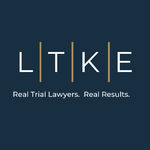Nonqualified Deferred Compensation - What is it?
- Nonqualified Employer Retirement Savings Plan that does not meet the tax and labor law (ERISA) requirements for qualified pension plans.
- Used to provide retirement benefits to a select group of executives or key personnel or to provide supplemental benefits beyond those provided by company’s qualified plan
- 457(b) plans are for tax exempt organizations or governmental agencys
- 457(b) plans can include employee deferrals, employer match and employer non-elective contributions. Combined these contributions are subject to the annual contribution limit of $19,500 for 2021.
Advantages?
- Involves minimal IRS, ERISA and other regulatory requirements such as reporting & disclosure, fiduciary funding requirements, etc.
- More plan design flexibility than qualified plans.
- Allows coverage for a group of employees or even a single employee without any non-discrimination requirements.
- Allows Employer to provide different benefit amounts for different employees on different terms & conditions.
- Restores contributions/benefits limited by IRS restrictions in qualified retirement plans.
- Employee can defer the max amount($19,500 for 2021) to 457(b) and max to 401(k)/403(b)
- This is an attractive feature for those key employees really looking to maximize their retirement savings.
Disadvantages?
- Tax exempt 457(b) plan must restrict eligibility to a select group of executives or key personnel.
- For 457(b) plans the annual deferral limit ($19,500 for 2020) includes employee deferrals, employer match and employer non-elective contributions. This could become an issue if the employer is making a significant employer contribution to the plan.
Investment of Assets
- Participants can elect how to invest the assets of the plan.(i.e. mutual funds, etc.)
Distribution Rules
457(b) Plans
- Withdrawals permitted after severance of employment and for unforseen emergencies
- Must start receiving benefits by April 1 following later of retirement or age 72
- Plan loans permitted
The Next Step
- What is the Employer’s objective with the Retirement plan?
- Whom do you want to benefit in the plan?
- What level of benefit do you wish to provide?












